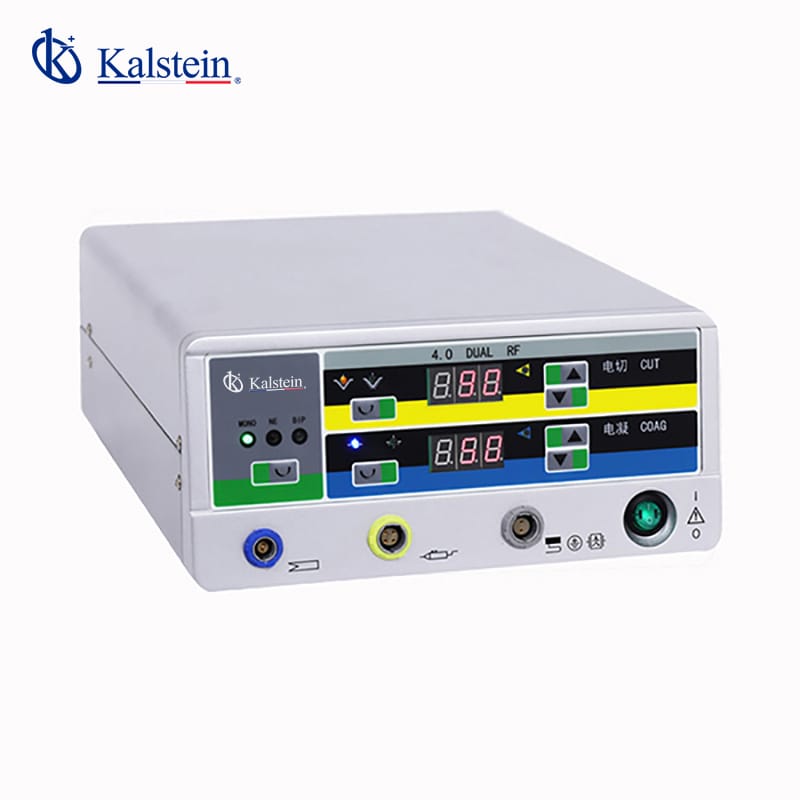Electrosurgical units (ESUs) are essential tools in modern medical procedures, allowing precise cutting and coagulation through the use of electrical currents.
In this article, we will provide a detailed guide on how to use these units effectively, ensuring the best clinical outcomes. We will cover the basics of ESUs, practical tips, and step-by-step tutorials.
We understand that you need equipment that delivers maximum value to your laboratory. We invite you to visit https://kalstein.de/category-product/medical-line/electrosurgical-unit/, to immerse yourself in our universe of cutting-edge technology equipment. Our prices are competitive and accessible, we combine the convenience of online shopping with the guarantee of an exceptional product. Because you deserve the best, we create and offer top-tier laboratory equipment. Make your choice today, where science comes to life. https://kalstein.de/
Understanding the Basics of the Electrosurgical Unit
The electrosurgical unit is a device that uses high-frequency electrical currents to cut, coagulate, desiccate, or fulgurate tissues. The ESU consists of several essential components, including a high-frequency generator, active and passive electrodes, and adjustment controls for power and mode selection.
Understanding how an ESU works is fundamental for its safe and effective use. Active electrodes apply the electrical current to the tissue, while passive electrodes close the electrical circuit through the patient’s body. It is crucial to correctly adjust the power and select the appropriate mode (cut, coagulate, or a blend of both) for each specific procedure.
Preparing and Setting Up the Electrosurgical Unit
Before starting any procedure with an ESU, it is vital to perform proper preparation and setup. First, ensure that the equipment is in optimal working condition. Conduct a visual inspection of the generator, cables, and electrodes for any damage or wear.
Set up the electrosurgical unit according to the procedure’s specifications. This includes selecting the appropriate mode (cut, coagulate, or blend) and adjusting the output power. Always perform a functionality test before using the ESU on a patient to ensure that all components are working correctly.
Basic Techniques for Using the Electrosurgical Unit
Effective use of an ESU requires mastery of several basic techniques. A common technique is the “quick touch,” where the active electrode is briefly applied to the tissue to cut or coagulate without causing excessive thermal damage.
Another important technique is the “traction and cut,” used in cutting procedures. This involves gently applying traction to the tissue while performing the cut with the active electrode. This technique helps minimize bleeding and achieve more precise cuts.
Practical Tips for Optimizing Electrosurgery Results
To achieve the best results in electrosurgery, consider these practical tips. First, keep the working area clean and dry. The presence of liquids can interfere with the electrical current and reduce the procedure’s effectiveness.
Another essential tip is to always use high-quality electrodes and replace them regularly. Worn electrodes can decrease cutting and coagulation efficiency, increasing the risk of complications. Additionally, adjust the output power according to the tissue type and cutting depth to avoid excessive burns or insufficient coagulation.
Step-by-Step Tutorial: Performing a Biopsy with an ESU
Here is a step-by-step tutorial on how to perform a biopsy using an electrosurgical unit. This procedure is common in medical research and disease diagnosis.
Step 1: Set up the ESU in cutting mode with appropriate power for the tissue type to be biopsied. Ensure the active electrode is clean and in good condition.
Step 2: Position the patient comfortably and expose the biopsy area. Disinfect the area with a suitable antiseptic.
Step 3: Make a small incision with the active electrode, applying a quick touch to minimize thermal damage. Extract the tissue sample and place it in an appropriate container for analysis.
Step 4: Use the coagulation mode of the ESU to control any bleeding at the biopsy site. Apply pressure if necessary and ensure adequate coagulation before completing the procedure.
Innovations and Trends in Electrosurgical Technology
Medical technology is constantly evolving, and electrosurgical units are no exception. The latest trends in medical technology include the integration of navigation and image-guided systems, allowing for greater precision during electrosurgical procedures.
Recent advances in medical research have also led to the development of specialized electrodes for specific procedures, such as laparoscopic and robotic surgery. These advances not only improve the precision and efficacy of procedures but also reduce recovery time and postoperative complications for patients.

